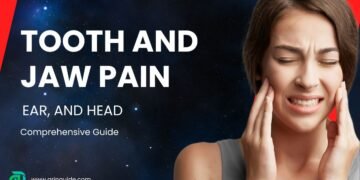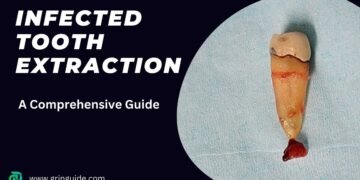Table of Contents
Introduction
Silver Diamine Fluoride (SDF) is a topical medicament utilized in dental care, known for its efficacy in arresting dental caries and preventing further decay. Composed of silver, fluoride, water, and ammonia, SDF serves a dual purpose: the silver acts as an antimicrobial agent, while the fluoride aids in the remineralization of tooth enamel. This combination makes SDF a potent tool in the fight against tooth decay.
The use of silver compounds in dentistry dates back to the early 20th century, but it wasn’t until the 21st century that SDF gained significant traction. Initially developed in Japan, SDF has been extensively researched and validated through numerous studies, leading to its approval by various dental health authorities worldwide, including the U.S. Food and Drug Administration (FDA) in 2014. This approval has paved the way for its widespread use in modern dental practices.
One of the primary reasons SDF has gained popularity in contemporary dentistry is its non-invasive nature. Traditional cavity treatments often require drilling and filling, which can be uncomfortable for patients, especially children and the elderly. In contrast, SDF can be applied directly to the affected area without the need for anesthesia or complex procedures, making it an attractive option for patients and dental professionals alike.
Furthermore, SDF’s ability to halt the progression of caries without removing the affected tooth structure has significant implications for preventive dental care. Its ease of application, combined with its effectiveness, makes it a valuable tool in managing caries in community health settings, particularly for underserved populations who may have limited access to dental care.
In essence, Silver Diamine Fluoride represents a pivotal advancement in dental medicine, offering a practical and effective solution to one of the most common dental problems. Its historical roots, proven efficacy, and patient-friendly application underscore its growing reputation as a cornerstone in the prevention and management of dental caries.
How Silver Diamine Fluoride Works
Silver diamine fluoride (SDF) operates through a dual-action mechanism that makes it highly effective in treating dental caries. The silver component in SDF acts as a potent antimicrobial agent. When applied to a decayed tooth, the silver ions penetrate the affected area and disrupt the bacterial cell walls, ultimately leading to bacterial cell death. This antimicrobial activity significantly reduces the bacterial load in the decayed area, helping to halt the progression of tooth decay.
In addition to its antimicrobial properties, the fluoride component in SDF plays a crucial role in remineralizing tooth enamel. Fluoride ions interact with the hydroxyapatite in tooth enamel, forming a more acid-resistant compound known as fluorapatite. This chemical interaction not only strengthens the tooth structure but also makes it less susceptible to future decay. The combined action of silver and fluoride in SDF thus provides both immediate and long-term benefits in managing dental caries.
The chemical interactions that make SDF effective are grounded in its unique composition. When applied to a tooth, the silver diamine fluoride breaks down into its constituent ions. The silver ions (Ag+) bind to the bacterial proteins and DNA, leading to irreversible damage and bacterial cell death. Concurrently, the fluoride ions (F-) are absorbed by the tooth enamel, contributing to the remineralization process. This dual-action mechanism is what sets SDF apart from other dental treatments, offering a comprehensive solution for tooth decay.
Furthermore, SDF has the advantage of being non-invasive and easy to apply, making it particularly suitable for pediatric and geriatric patients, or those with special needs. Its ability to stop tooth decay and promote remineralization without the need for drilling or anesthesia makes it a valuable tool in modern dentistry. Through its antimicrobial and remineralizing actions, silver diamine fluoride provides an effective, efficient, and patient-friendly approach to managing dental caries.
Toxicity and Safety Concerns

Concerns regarding the toxicity of silver diamine fluoride (SDF) are common, given its chemical composition which includes both silver and fluoride. However, extensive scientific studies have demonstrated that SDF has a favorable safety profile when used according to recommended guidelines. The primary components, silver and fluoride, have been individually studied for decades, each showing a well-established safety record in various applications, including dental treatments.
When it comes to silver diamine fluoride, the key to ensuring safety lies in adherence to recommended usage levels. Typically, the application of SDF is limited to a few drops, which contain an amount of silver and fluoride well within safety limits. Clinical guidelines suggest that SDF should not be used indiscriminately but rather reserved for specific cases such as arresting dental caries in patients who cannot undergo traditional restorative procedures.
Potential side effects of SDF are generally mild and include temporary staining of the treated area, which is often viewed as a trade-off for caries arrest. The staining is usually limited to the decayed portion of the tooth and does not affect healthy enamel. Some patients may also experience temporary irritation of the gums or soft tissues if the solution comes into contact with these areas, but such reactions are typically minor and transient.
Precautions are necessary to mitigate any risks associated with silver diamine fluoride. Dental professionals are advised to apply SDF in controlled environments, using protective barriers to safeguard surrounding tissues. Additionally, comprehensive patient education about the benefits and limitations of SDF treatment can enhance compliance and satisfaction.
In conclusion, while the concerns about the toxicity of silver diamine fluoride are understandable, the body of scientific evidence supports its safe use under professional supervision. By adhering to established guidelines and taking appropriate precautions, the benefits of SDF can be maximized while minimizing potential risks.
Clinical Applications and Effectiveness
Silver diamine fluoride (SDF) has garnered significant attention within the dental community for its versatile applications and proven effectiveness. One of the most prominent uses of SDF is in pediatric dentistry. Children, especially those with early childhood caries, benefit greatly from this non-invasive treatment. By applying SDF to decayed teeth, dentists can arrest caries progression, thereby avoiding more invasive procedures like fillings or extractions. This is particularly advantageous for young patients who may experience anxiety or have difficulty cooperating during dental treatments.
In geriatric care, SDF serves as a valuable tool in managing dental health. Elderly patients often face unique challenges, including limited mobility, cognitive impairments, and a higher prevalence of root caries due to gum recession. SDF offers a simple and effective solution to arrest caries in these patients, reducing the need for complex dental procedures that may be difficult for them to endure. Furthermore, its application is quick and painless, making it ideal for use in both clinical settings and long-term care facilities.
Patients with special needs also benefit significantly from the use of silver diamine fluoride. Individuals with physical or cognitive disabilities may find conventional dental treatments challenging. SDF provides a less stressful alternative, allowing for the management of caries without the need for sedation or extensive dental work. This aligns with the broader goal of providing accessible and inclusive dental care for all patients.
Numerous clinical studies have underscored the effectiveness of SDF in arresting caries and preventing new cavities. Research indicates that SDF can halt the progression of carious lesions in the majority of treated teeth, with success rates ranging from 70% to 90%. For instance, a study published in the Journal of Dental Research demonstrated that SDF was effective in arresting caries in 80% of cases after just one application. These findings are supported by real-world examples, such as a case study involving a 5-year-old child with multiple carious lesions. After the application of SDF, the caries were arrested, and the child experienced no further decay over a 12-month period.
In conclusion, the clinical applications of silver diamine fluoride are vast and varied, making it an indispensable tool in modern dentistry. Its effectiveness in arresting caries and preventing new cavities is well-documented, providing a valuable alternative to traditional dental treatments for diverse patient populations.
Procedure for Applying Silver Diamine Fluoride
Applying silver diamine fluoride in a dental setting requires a precise and methodical approach to ensure its efficacy and safety. The process begins with thorough preparation. The dental professional starts by isolating the affected tooth or teeth using cotton rolls or other isolation methods to keep the area dry and free from saliva. This step is crucial as moisture can hinder the effectiveness of silver diamine fluoride.
Once isolation is achieved, the dentist proceeds with cleaning the tooth surface. This typically involves the removal of any debris, plaque, or superficial decay using a small brush or a gentle air abrasion technique. The cleaned surface allows for better penetration and adherence of the silver diamine fluoride. Following the cleaning, the tooth is dried using a gentle stream of air.
Next, the silver diamine fluoride solution is prepared. The dental professional carefully dispenses a small amount of the solution onto a disposable brush or micro brush. Caution is paramount at this stage to avoid over-application and potential staining of surrounding tissues. With the solution ready, the dentist applies the silver diamine fluoride directly to the affected area of the tooth, ensuring thorough coverage of the decayed region. The application is gentle yet precise, allowing the fluoride to penetrate deep into the tooth structure.
After the application, the treated area is left undisturbed for a few minutes to allow the silver diamine fluoride to set and exert its therapeutic effects. During this time, the patient is advised to keep their mouth open and avoid swallowing, ensuring the solution remains in place. Once the setting period is complete, the dentist may rinse the mouth gently to remove any residual solution.
Post-application care involves advising the patient on specific precautions. It is generally recommended to avoid eating or drinking for at least one hour following the procedure to allow the fluoride to fully integrate into the tooth. Additionally, patients are informed about the potential for temporary staining of the treated area, which is a normal and expected outcome of silver diamine fluoride application.
By following these meticulous steps and taking necessary precautions, dental professionals can effectively utilize silver diamine fluoride to arrest dental caries and provide patients with a minimally invasive treatment option.
Cost Considerations and Insurance Coverage
When evaluating the cost of silver diamine fluoride (SDF) treatment, it is essential to consider its affordability compared to other dental treatments. SDF is generally more cost-effective than traditional restorative procedures such as fillings or crowns. The lower cost is attributed to the minimal materials and time required for application. On average, a single application of SDF can range from $20 to $30 per tooth, making it an attractive option for patients seeking economical dental care solutions.
Dental insurance coverage for SDF treatment varies significantly across providers and plans. While some insurance companies have started recognizing the benefits of SDF and offer partial or full reimbursement, others may still categorize it as an experimental treatment, thus not covering it under standard policies. Patients should consult their dental insurance providers to ascertain the extent of coverage for SDF treatments.
Out-of-pocket expenses for SDF can be relatively low, especially when compared to the costs associated with more invasive procedures. However, it is important to note that multiple applications may be necessary to achieve the desired results, potentially increasing the overall cost. Patients should discuss the treatment plan with their dentist to understand the total anticipated expenses.
For individuals without dental insurance or for those whose plans do not cover SDF, financial assistance programs may be available. Some dental clinics offer sliding scale fees based on income, while others might provide payment plans to spread the cost over time. Additionally, community health centers and certain non-profit organizations may offer SDF treatments at reduced rates or even for free to qualifying patients. Exploring these options can make SDF a viable and accessible treatment for a broader range of individuals.
Where to Purchase Silver Diamine Fluoride
For dental professionals and individuals interested in purchasing silver diamine fluoride (SDF), it is crucial to source the product from reputable suppliers to ensure quality and compliance with regulatory standards. SDF is primarily used by dental professionals for its effectiveness in arresting dental caries and providing an alternative treatment for patients, especially those who are unable to undergo more invasive procedures. However, some individuals might seek to purchase the product for personal use, which necessitates a careful approach to ensure safety and efficacy.
Dental professionals typically acquire silver diamine fluoride from established dental supply companies. Reputable suppliers such as Henry Schein, Patterson Dental, and Benco Dental are well-known for providing high-quality dental products. These companies offer various brands of SDF, including Advantage Arrest, Riva Star, and others, each with unique formulations and concentrations. When purchasing from these suppliers, professionals can rest assured that the product meets the necessary regulatory standards and is sourced from manufacturers that comply with industry guidelines.
For individuals looking to purchase silver diamine fluoride for personal use, it is important to consult with a dental professional first. Self-application of SDF without proper guidance could lead to unintended consequences, including staining of teeth or soft tissues. A dental professional can provide recommendations on appropriate usage and direct individuals to reliable sources. Some pharmacies or specialized medical supply stores might carry SDF, but it is essential to verify the legitimacy and quality of the product before making a purchase.
Regulatory considerations also play a significant role when purchasing silver diamine fluoride. In many regions, SDF is classified as a prescription-only medication, meaning it can only be dispensed by licensed dental professionals. This regulation ensures that the product is used correctly and safely, minimizing the risk of misuse. Therefore, individuals must adhere to local regulations and seek professional advice when considering the use of SDF.
In summary, whether you are a dental professional or an individual looking to purchase silver diamine fluoride, sourcing it from reputable suppliers and adhering to regulatory standards is paramount. Consulting with a dental professional ensures the safe and effective use of SDF, ultimately contributing to better oral health outcomes.
Future Prospects and Innovations
Silver diamine fluoride (SDF) is rapidly gaining recognition in the dental community due to its unique properties and efficacy. Ongoing research is consistently revealing new insights and applications for SDF, suggesting a promising future for this dental treatment. One area of focus is the potential for combining SDF with other therapeutic agents to enhance its effectiveness. For instance, researchers are exploring the synergistic effects of SDF and fluoride varnish to provide a more comprehensive approach to caries prevention and treatment.
Another innovative direction involves integrating SDF with advanced delivery systems. Microencapsulation techniques, for example, could allow for more controlled and sustained release of silver ions, potentially increasing the duration of its antimicrobial effects. Additionally, the use of SDF in conjunction with laser technology is being investigated to optimize its penetration and efficacy in treating deeper cavities.
Looking ahead, the development of new formulations that minimize the common aesthetic drawback of SDF—its tendency to stain treated teeth black—holds significant promise. Researchers are working on variations of SDF that reduce this side effect without compromising its potent antimicrobial properties. Innovations in this area could make SDF a more attractive option for both patients and practitioners.
There are also upcoming products currently in the pipeline that aim to harness the full potential of silver diamine fluoride. These products are being designed to be more user-friendly and efficient, with application methods that could simplify the treatment process. Some of these new technologies are focusing on targeted delivery systems, ensuring that SDF is applied precisely where it is needed most, thus maximizing its therapeutic benefits.
The future of SDF in dentistry looks bright, with continuous advancements and innovations paving the way for its expanded use. As research progresses and new technologies emerge, SDF’s role in dental care is likely to become even more significant, providing an effective and versatile tool in the fight against dental caries and other oral health issues.
FAQs
-
What Does Silver Diamine Fluoride Do?
Silver diamine fluoride (SDF) is a dental treatment primarily used to halt the progression of tooth decay. It is a liquid that can be applied directly to cavities, effectively stopping the decay process. The silver component acts as an antimicrobial agent, while the fluoride helps to remineralize and strengthen the tooth enamel.
-
What is the Controversy with Silver Diamine Fluoride?
Despite its effectiveness, silver diamine fluoride is not without controversy. One of the main concerns is its cosmetic effect; the application of SDF can stain decayed parts of the tooth black, which can be aesthetically displeasing, especially on front teeth. This staining is permanent and can only be removed by further dental procedures. Additionally, there are questions about the long-term effectiveness and potential side effects of using SDF in pediatric dentistry.
-
How Safe is Silver Diamine Fluoride?
When it comes to safety, silver diamine fluoride has been deemed generally safe for use by dental professionals. It has been approved by the Food and Drug Administration (FDA) for treating tooth sensitivity, and its off-label use for caries treatment is widely accepted. However, there are some precautions; it should not be used on individuals with silver allergies or ulcerative gingivitis. Proper application by a trained dental professional minimizes risks, making it a reliable option for many patients.
-
What are the Disadvantages of Silver Diamine Fluoride?
Aside from the cosmetic issue of tooth discoloration, there are a few other disadvantages to consider. The taste of SDF can be unpleasant, and its application can cause temporary irritation to the gums and soft tissues in the mouth. Moreover, while SDF can halt decay, it does not restore the tooth’s structure, meaning additional restorative treatments may still be necessary.











